 You’ll all remember the article I published on the Granite Belt in the August edition of our Cellar Club Newsletter, of course. The Granite Belt has over 50 wineries, from boutique producers through to award-winning estates – along with breweries and distilleries [for vodka and gin].
You’ll all remember the article I published on the Granite Belt in the August edition of our Cellar Club Newsletter, of course. The Granite Belt has over 50 wineries, from boutique producers through to award-winning estates – along with breweries and distilleries [for vodka and gin].
Well, I decided it would be a great break to go see what it was actually like.
This holiday was a little tempered when the area in Brisbane had a series of fires start in early November just before we were due to go. So, we tracked them as best we could via the internet, plus were in contact with the locals [via email]. The locals confirmed the fires were out in their area before we departed New Zealand shores.
The damage done by the fires was quite apparent as we got close to the Granite Belt, which is between 900 – 1,000m above sea level. Both sides of the road were scorched in places, and the railway line that [did] run through Granite Belt territory was completely charred. They use untreated timber in Australia and treat the rails with creosote to preserve it! Fuel to burn there.
On the way to the Granite Belt area, we stopped at the Summer Lane Camel Farm. Nice, and a different place to have morning tea, buy gifts and experience camels, if you’ve never had this experience.
 On the Friday evening when we arrived in the Granite Belt, our first stop was at Balancing Heart Vineyard, a short drive from the town of Ballandean, with the backdrop of Girraween National Park. We indulged in a tasting flight and one of their woodfired pizzas – well worth it. They were welcoming and had a relaxed approach at the end of the day.
On the Friday evening when we arrived in the Granite Belt, our first stop was at Balancing Heart Vineyard, a short drive from the town of Ballandean, with the backdrop of Girraween National Park. We indulged in a tasting flight and one of their woodfired pizzas – well worth it. They were welcoming and had a relaxed approach at the end of the day.

- Blanc de Blanc – blend of their chardonnays
- Verdello – soft, pineappley taste, dry on palate
- Rosé – cherries on the tongue and nose
While we were enjoying our time at the vineyard, we could walk along the vines and see the naturally occurring balancing rocks. These were throughout the area and are huge! You could slightly smell the smell of ash or burnt wood in the air, but as they’d had four days of rain before we arrived, the odour wasn’t that strong at all.
Well worth a visit, taste wise and visually.
 Saturday, and our second vineyard was Ravencroft Vineyard, which is a boutique vineyard and small batch winery, founded by award-winning winemaker Mark Ravenscroft. The new owners had worked with Mark for three years to get a good transfer of knowledge and skill. All wines are made on-site with minimal intervention and additives.
Saturday, and our second vineyard was Ravencroft Vineyard, which is a boutique vineyard and small batch winery, founded by award-winning winemaker Mark Ravenscroft. The new owners had worked with Mark for three years to get a good transfer of knowledge and skill. All wines are made on-site with minimal intervention and additives.
We joined in with other visitors and did a full tasting:
- Verdelho 2022 – very gentle on both nose and taste
- Vermintino 2022 – really lemony [their crop wasn’t very good that year, so they imported the grapes from Chalmers in Victoria]
- Skin Contact Fiano 2022 – smooth with honey and fruit on the tongue [this is a Naples variety]
- Reserve Chardonnay 2021 – it had eight months in oak, and was lovely
- Rose Sangiovese – dry Italian style, smooth, could alter with food [Tuscany variety] had added Fiano and Vermentino to boost flavour
- Nero d’Avola 2022 – light and grassy – would go great with pizza on a Friday night [Chile variety]
- Reserve Petite Verdot – aged in old oak barrels, you can taste mushrooms/ earthiness, smooth and dry.
- 2022 Cherry Bomb – total cherry nose, smooth, dry, nice cherry flavours on the tongue
- Pinotage Waagee 2021 – smooth, dry, fruity, lemony bite at the end as it goes down.
Would recommend a visit, to relax in the atmosphere and taste their wines.
 That same day, while it’s not a vineyard, it’s well worth going for a meal at Varias Restaurant & Fine Training facility, training the staff of the future. Their menu reads like a tantalising travelogue of the Granite Belt’s finest food producers. We had the two-course option at $59 per head, plus wines of course:
That same day, while it’s not a vineyard, it’s well worth going for a meal at Varias Restaurant & Fine Training facility, training the staff of the future. Their menu reads like a tantalising travelogue of the Granite Belt’s finest food producers. We had the two-course option at $59 per head, plus wines of course:
- Sparkling Marsaane – pear, citrus and honey esp. honey, went magnificently with the pork belly entrée’
- 2023 Verdelho – pears on the nose and palate [John’s wine for the whole meal]
- Tempranillo 2023 bronze medal Qld Awards – soft tannins, dry finish, white pepper, red fruit, went well with the Main of brisket with broccalini, pumpkin, greens beans and the best road potatoes.
- Dessert was Lemon meringue pie with Raspberry ice cream.
This establishment would be the equivalent to the Whitireia & Weltec Hospitality Campus we’ve been to as a Club in Cuba Street. Well balanced and thought-out meals and wine combinations. Located at the Queensland College of Wine Tourism, this restaurant is all about celebrating seasonal produce year-round.
 Then on Sunday, we had what was the most comprehensive wine tasting of the week in the Granite Belt, at Ballandean Estate Wines. Ballandean Estate is Queensland’ oldest operating winery family-owned and operated by the Puglisi family since 1932.
Then on Sunday, we had what was the most comprehensive wine tasting of the week in the Granite Belt, at Ballandean Estate Wines. Ballandean Estate is Queensland’ oldest operating winery family-owned and operated by the Puglisi family since 1932.
This is a single-vineyard, cool climate made-with-love wine establishment, with Shiraz from 50-year- old vines, as well as their ‘Strange Bird’ varietals.
We had booked in for one of their tastings, hosted by their wine educators. Their tasting came six limited release wines served with a gourmet platter, to complement the tasting. The platter turned out to be a meal in itself! When you arrive at the Estate, you go through to their Barrelroom Wine Lounge.
Must add in that they had a disability path, as well as their main steps, into them establishment. Handy if you are disabled, but perhaps mostly handy on the way out?
Ballandean Estate is one of the vineyards in the Belt that grow ‘Strange Bird’ wines. Strange Bird wines are rare, alternative varieties that represent less than one per cent of Australian vines – albarino (also known as alvarine), chenin blanc, cortese, fiano, gewurztraminer, gros and petit manseng, gruner veltliner, malvasia, marsanne, roussane and savagnin. While we didn’t taste all of these, we certainly tried a few.
 Monday night we dined at Granite Belt Brewery. On the way up their driveway, driving past the vines, we saw kangeroos grazing the vines, with joeys in their pouches, so special. They weren’t bothered by us, but were keeping an eye on us, as we’d stopped the car for the photo opportunity. The Brewers is Stanthorpe’s premier brewers, crafting delicious beers and ciders since 2012. They use the local water supply, as well as the finest malts, hops and yeast.
Monday night we dined at Granite Belt Brewery. On the way up their driveway, driving past the vines, we saw kangeroos grazing the vines, with joeys in their pouches, so special. They weren’t bothered by us, but were keeping an eye on us, as we’d stopped the car for the photo opportunity. The Brewers is Stanthorpe’s premier brewers, crafting delicious beers and ciders since 2012. They use the local water supply, as well as the finest malts, hops and yeast.
It wasn’t a busy night for the restaurant, but it was about half full, and while they were focussed on craft beer the food and wine was fabulous. Everything was of course overwhelmed by the thunder and lightning storm that hit sometime before we were to leave to go back to our accommodation. Driving back-country roads without the sky full of stars to guide you [besides the GPS], was a little dodgy, so the valley-wide lightening was quite helpful!
OTHER things we enjoyed seeing during our stay was their Mt Marlay lookout – don’t walk up to it! There is an 8% gradient to get up that particular piece of road – drive!
Go and find their pyramid – a local farmer got overwhelmed by the number of smaller granite rocks on his property and constructed a 17m high pyramid with them! Quite impressive and good photo opportunity, though you can’t get into the field now, selfie still looks pretty cool.
Viewing their giant thermometer is fun too. The Belt is the only area in Queensland that usually gets snow every winter. They’re fully equipped and operational during their Winters for visitors.
They have their own Granite Belt Christmas Tree Farm, which was so much fun! This runs from Oct-Feb of each year. We were there in the last week of November, and it was packed! As well as rolling up to pick your own tree, getting it cut down, then using their tree wrap machine(!) there was a huge barn set up for all sorts of artificial trees and larger decorations, a smaller building with shop full of smaller decorations, plus morning tea supplies and gelato – we tried Christmas cake gelato and Kinder gelato. Both passed the test. Again, would recommend if you’re there at that time.
Go to Sutton’s Juice Factory & Cidery – they are famous for their apple pie, and their steak pies are pretty good to! We indulged in both.
There were two places that we wouldn’t recommend, as the experience we were anticipating simply didn’t happen:
- Hidden Creek, whose website we had checked 2-3 times before we got to it, to see if we could breakfast there. According to their website this was ok, but on getting to their vineyard, not so:
- Robert Channon Wines was off-hand and disorganised. Not welcoming to the point that even though their vineyard had an ‘Open’ sign out at the gate, no-one was around, facilities were semi- closed and the only person we saw ran away!
Despite the above two businesses, we had a delightful time, met interesting and informative people and tasted some great wines. Would recommend paying a visit to the area if you don’t mind a three-hour drive inland from Brisbane.

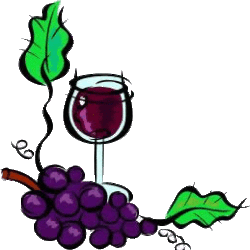




 We were to be entertained in September by Gordon Russell from Esk Valley. Gordon is described as one of the Godfathers of the wine industry.
We were to be entertained in September by Gordon Russell from Esk Valley. Gordon is described as one of the Godfathers of the wine industry.





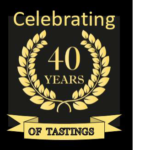

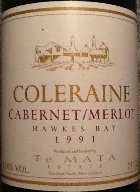



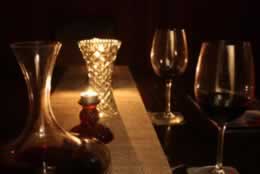 … and a quiet night with friends
… and a quiet night with friends
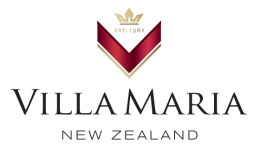 This meeting was excellent with Jonathan (Jono) Hamlet being an interesting and enthusiastic speaker concentrating on the organic viticulture rather than the wine. It was a very informative balanced presentation, leading to a good level of orders. A good follow up with the newspaper item included in the newsletter.
This meeting was excellent with Jonathan (Jono) Hamlet being an interesting and enthusiastic speaker concentrating on the organic viticulture rather than the wine. It was a very informative balanced presentation, leading to a good level of orders. A good follow up with the newspaper item included in the newsletter.